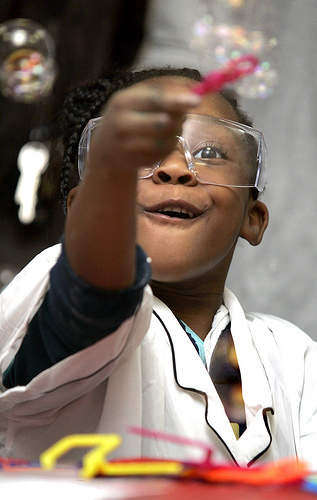California To Participate In Next Generation Science Standards

State Superintendent of Public Instruction Tom Torlakson announced the Next Generation Science Standards (NGSS) will revise the educational content and practices for K-12th graders, making experimentation standards more explicit by integrating engineering into the core of every grade’s curriculum.
The new standards are intended to increase the amount of students who go on to take jobs in science, technology, engineering, and math, also known as the STEM fields. The revision will be the first California has seen in over a decade.
Consultant for the Mathematics and Science Leadership Office at the California Department of Education Phil Lafontaine said California has been underperforming in science on a national scale. While for state educators the incentive is to become more competitive nationally, Lafontaine says the NGSS standards developed by the National Research Council are also meant to “benchmark national science standards against worldwide science standards.”
The new standards will be based around four core elements: life; physical; earth and space sciences; and engineering, technology and the applications of science. To tie it all together, they will focus on overarching themes that span between grades. The next standwards will emphasize depth over breadth and place a greater emphasis on application.
According to Lafontaine, one of the failings of the current standards has been in a lack of focus on learning about how science is done.
“Many times when science is taught in schools today in California – as well as across the nation – it tends to be more of a non-scientific learning in that there’s not a lot of exploration of the scientific process," Lafontaine says. "It’s mostly just the content knowledge.”
Jane Fung, a teacher at the Dr. Theodore T. Alexander, Jr. Science Center School agrees students need a basis in scientific inquiry and experimentation “… instead of memorizing, I think [the NGSS] should concentrate more on the possibilities and what is evident right now, rather than ‘this is fact.’”
Jung wants her students to actively seek and discover their own answers to scientific problems.
“There were three states of matter when we first started, well now there’re four, and somebody thinks there’re five," Jung says. "Scientists discover things all the time, and the world is changing so as scientists, you can discover things, and you can get evidence and prove it.”
While California has had investigation and experimentation standards, they’ve often been undermined by content standards. Because this application standard will be integrated into the very core of the science program itself, experimentation will constitute a means of teaching content rather than remaining separate.
Both the experimentation standards and the overarching themes will serve to better bridge the gaps between grades that might have left some students lost. Engineering in particular has never been integrated into primary grade curriculums and often students are not prepared when they are exposed to it for the first time.
The principal of the Science Center School Paula Denen favored the next standard's newest addition.
“You’ve got to have some sort of preparation at an elementary level before they get into secondary," Denen says. "If they don’t have the interest or the preparation in math, I think by the time they get into college where they can go into engineering they’ve missed the mark.”
However, the Science Center School, which collaborates with the California Science Center to write lesson plans, is ahead of the pack on that front. Denen said she felt very strongly about implementing a junior robotics program in order to teach engineering fundamentals to younger students. Denen also says the program “has applications in the movement of the robots,” when kids use their math skills and solve problems to make the machines function.
Though the overarching motive may be to grow U.S. STEM workforce, the NGSS is not simply a job-placement strategy. Lafontaine says we need to use the new standards to bring the scientific process to a conscious level when making decisions as an individual and a citizen. He adds that when a doctor prescribes a medication, you, as an individual, have to ask yourself questions like “what’s the purpose of this medicine? What’s it going to do to me? Will it be effective?”
Strengthening our scientific literacy may be exactly the boost we need to continue to grow the STEM job market, which is already the fastest-growing sector of our workforce.
Contact reporter Makena here.
Best way to find more great content from Neon Tommy?
Or join our email list below to enjoy Neon Tommy News Alerts.



